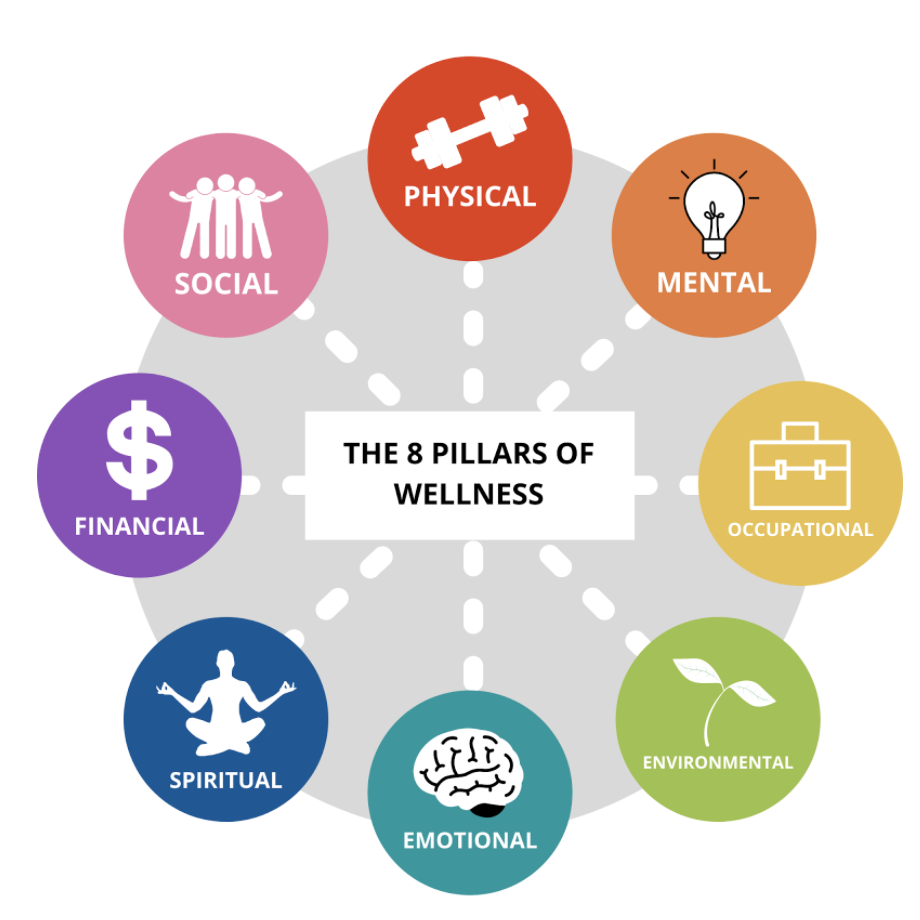What is Wellness?
The holistic approach to health and wellbeing is known as wellness. It includes both physical fitness and psychological and emotional health. Care for the full individual, including their physical, mental, and emotional health as well as their social and spiritual well-being, is referred to as wellness.
The holistic approach to health and wellbeing is known as wellness. It includes both physical fitness and psychological and emotional health. Care for the full individual, including their physical, mental, and emotional health as well as their social and spiritual well-being, is referred to as wellness.
What is Fitness?
Fitness is the capacity for physical activity and is frequently related to physical activity and athletics. It involves enhancing flexibility, muscle strength, and cardiovascular health. Regular exercise can raise energy levels, help you lose weight, and lower your chance of developing chronic conditions.

In a nutshell, wellness includes fitness. While consistent exercise is crucial for fitness, it is not the sole element. In order to be fully healthy, one must also pay attention to their mental and emotional wellbeing, their interpersonal connections, and their overall sense of fulfilment.
Common practices for maintaining wellness
The phrase “some common practises for maintaining wellness” refers to several behaviours or routines that might support a person’s overall wellbeing. Here is a quick description of each technique:
Eating a balanced and healthy diet
This entails ingesting a range of nutrient-rich meals that give the body the vital vitamins, minerals, and nutrients it requires to operate in a healthy manner. Maintaining a healthy weight, preventing chronic diseases, and increasing general energy are all benefits of eating a balanced diet.

In order to maintain good health and wellness, sleep is essential. It enables the body to heal and regenerate itself and can enhance mood, cognition, and memory. Adults should aim for 7-9 hours of sleep per night.
Managing stress through mindfulness, yoga, and meditation
The effects of stress on one’s physical and mental health can be detrimental. Practises including meditation, yoga, and mindfulness can all lower stress and enhance general wellbeing.
Building and maintaining strong relationships
The emotional support and sense of belonging that come from having healthy relationships with friends and family can increase overall happiness.
Common practices for maintaining wellness
Cardiovascular exercise

These include cardiovascular exercises like jogging, cycling, swimming, or brisk walking that also raise breathing and heart rate. They aid in weight management, promote endurance, and help in cardiovascular health.
Strength training
These workouts, such as weightlifting or bodyweight exercises like pushups, squats, and pullups, concentrate on increasing muscular growth and strength. Strength training can lower the chance of injury, promote metabolism, and strengthen muscles and bones.
Flexibility and stretching exercises
These exercises, like yoga or Pilates, are made to increase balance, flexibility, and range of motion. They can lessen the chance of injury, stop muscular tightness, and encourage general relaxation.
High-intensity interval training (HIIT)
A workout like this mixes brief bursts of intensive exertion with rest intervals. HIIT can be an efficient and effective approach to increase metabolism, enhance fitness, and burn calories.
Consistently tracking progress
You may stay motivated by tracking your progress over time with an app or in a fitness notebook. You can use it to find out where you need to make improvements.
Incorporating variety in workout routines
Boredom and plateaus might result from sticking to the same exercise programme. You may challenge your body and avoid these problems by include variation in your workout regimen.
Setting and working towards specific fitness goals
You may stay motivated and on track by setting SMART (specific, measurable, attainable, realistic and time-bound) fitness objectives. You can track your progress and maintain concentrate with its assistance.
Also Read: Trade setup for Monday: Top 15 things to know before the opening bell
Although not all of these practises will apply to or be suited for everyone, it’s vital to remember that they are not mutually exclusive. However, adopting them into your life can greatly enhance your general well-being.
It’s crucial to remember that wellness is a journey rather than a destination. Everyone will have different wants and priorities, so what works for one person might not work for another. Finding what works for you and incorporating it regularly into your life are the keys.
Comparison of Fitness and Wellness
This article’s content is being offered for informative reasons only and is not meant to be a replacement for expert medical guidance, diagnosis, or treatment. Before making any modifications to your workout or food routine, it is crucial to speak with a licenced healthcare expert. Any exercise programme has the potential to cause damage, so it is the reader’s responsibility to maintain good form and technique and to seek medical assistance if an accident occurs. The article’s author and publisher disclaim all responsibility for any harm or loss brought on by the information it contains.





